Last Chance to Catch NYC's Holiday Notalgia Train
We met the voices of the NYC subway on our nostalgia ride this weekend!


This April, we at Untapped Cities have decided to pay homage to one of the most influential and honored directors of all time: Martin Scorsese. Scorsese has set 11 films in New York City, some of them inspired by his own experiences growing up in Lower Manhattan’s Little Italy, others exploring the cultural history of the city. Scorsese is one of only a handful of directors whose work is synonymous with New York and can be seen as a portal to the city’s grittier and darker past. In this first of four installments, we will take a look at five locations for his 1973 crime drama Mean Streets.
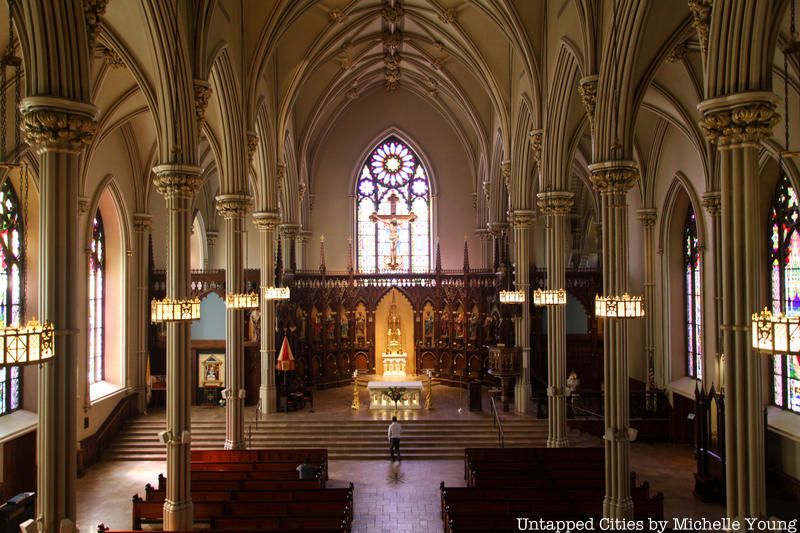
In this and his previous film Who’s That Knocking at My Door, Scorsese explores Catholic guilt. The Italian-American director did go to Catholic school as a child and at one time considered becoming a priest before becoming a director. However, it seems that not taking the high road (literally) is something that bothers Scorsese. In this scene, we are introduced to Harvey Kietel’s character Charlie. More than any of the other characters in the film, Charlie is struggling internally; he wants to be a good Catholic man, but the temptations of living a mob life are too good to pass by.
To show Charlie’s inner struggle, Scorsese uses a lot of religious imagery throughout the film. The most visually encapsulating is this shot inside Old St. Patrick’s Cathedral. The church located on Mulberry Street between Prince and Houston has been featured before, in our Godfather Film Locations post and the gymnasium was the scene of the recent BBQ Films reenactment of Back to the Future.
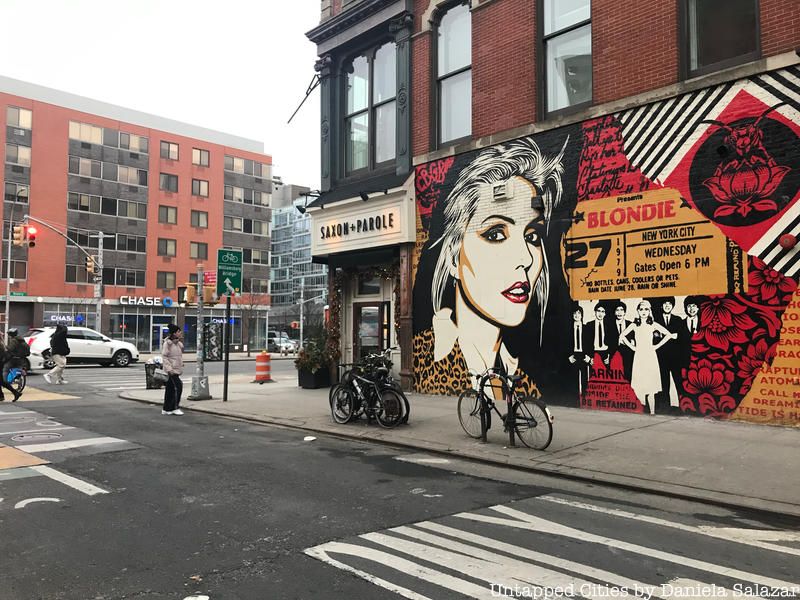
Something that will become evident as this series goes on, is how much New York City has changed in the 30 plus years of Scorsese’s career. There are not only storefronts, but entire neighborhoods that have gone through radical changes since Scorsese filmed Mean Streets. Take for instance this scene in which Charlie, Robert De Niro’s character Johnny Boy and David Proval’s character Tony are driving to help out a mutual friend. Where the corner of Bleecker and Bowery now has restaurants and art galleries, back in the early 70’s all those shops were used by small businesses: selling paint, lumber and other building equipment .
For more history on The Bowery. Check out The Downtown Doodler’s Tour of the Bowery.
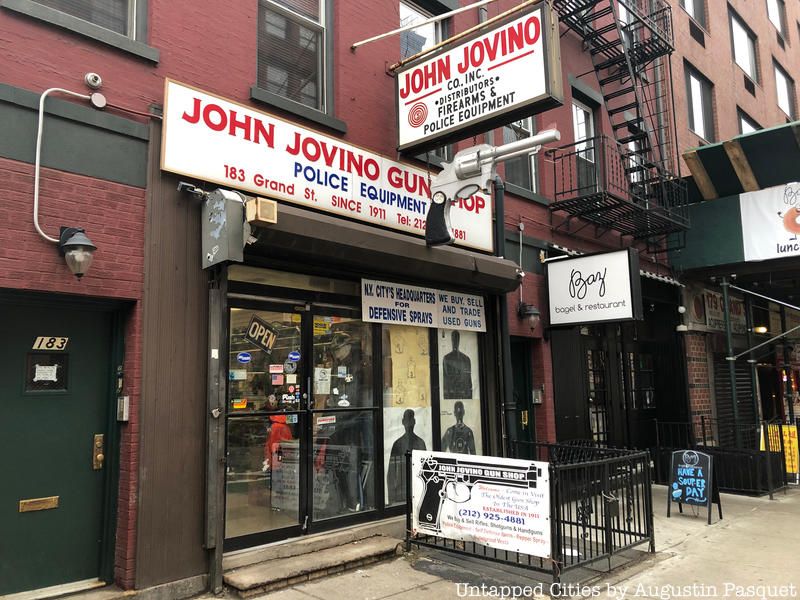
Charlie and Johnny Boy talk a walk and pass by this store with a very peculiar sign. John Jovino’s Gun Shop, originally located behind the Centre Street Police Headquarters, is located on 183 Grant Street in Little Italy. The shop belongs to the Imperatio Family, who have owned the shop since buying it off John Jovino in the 1920s. It is the oldest gun retailer in NYC, and claims to be the oldest in the country.
While the only customers the store should have are members of the NYPD, weapons have been linked to the store for crimes committed in NYC (the store itself was never accused of actually selling guns illegally). The store was also written about in an 2007 Village Voice article connecting sales from the store to UN diplomats from the Republic of Congo.
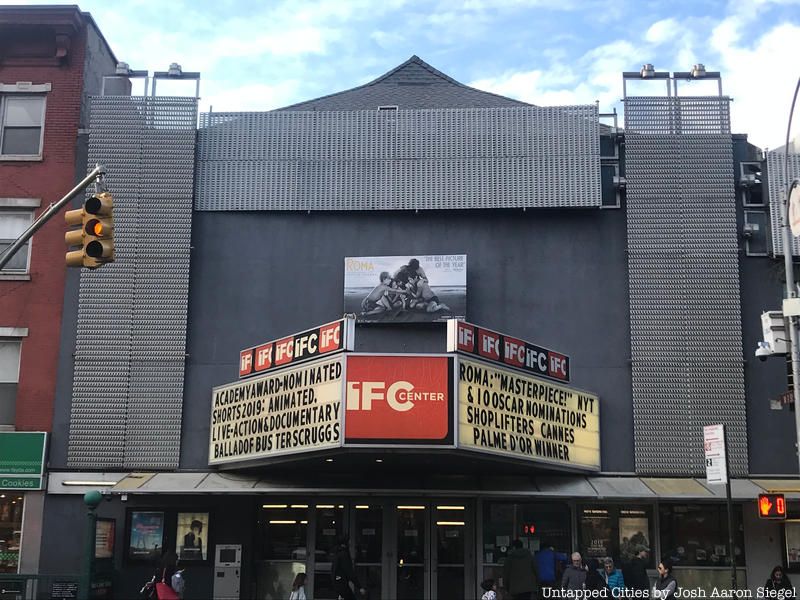
What is now the IFC Center, the movie theater at 323 Sixth Avenue was one of the most important art house theaters in NYC. Built in 1937, The Waverly Theater played art house films in the West Village for over sixty years. It was there that George A. Romero’s classic Night of The Living Dead premiered. It was at The Waverly that The Rocky Horror Picture Show began having their famous midnight showings; Scorsese, someone who idolizes film history, must have been a frequent attendee of this theater, for they showed the films made by directors who would later inspire him like Fellini and Goddard.
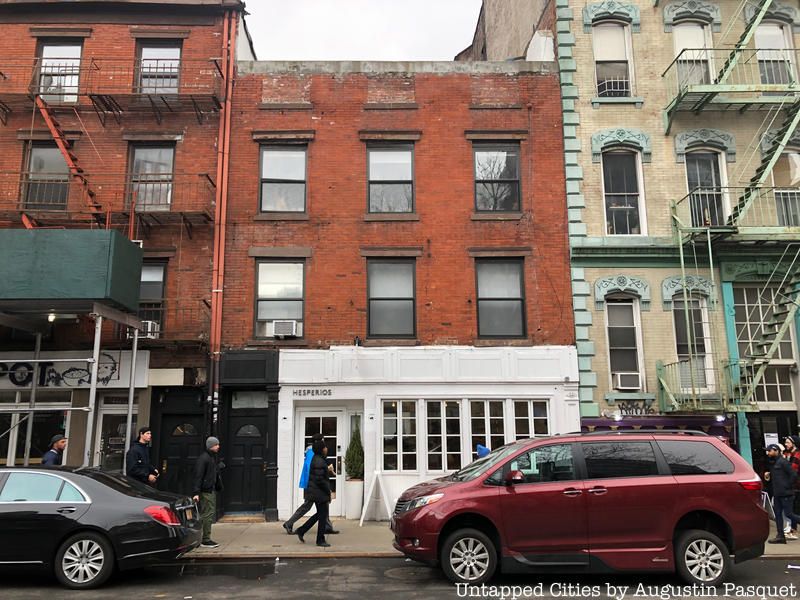
23 Cleveland Place today
This bar located on 23 Cleveland Place in SoHo is where most of the action of the film takes place. The first time we enter the bar, is right after Charlie prays in church. Scorsese wanted to show the contrast between the church (the holiest place in the film) and this bar. The lighting is a dark, reddish color and is filled with drunks, exotic dancers and gangsters. This is what hell is to Charlie and on a deeper level Scorsese.
It is in this bar, that the audience is properly introduced to Johnny Boy, a wild, young, interesting but destructive man. He is the streets, he is everything that Charlie does not want to be, but can not help seeing himself becoming. Numerous scenes play out in the bar, including Johnny Boy threatening the loan shark Michael with a revolver.
The bar no longer exists, as it was replaced by an Italian restaurant named Va Tutto! Sadly the restaurant has closed down as well, and now nothing stands where Scorsese filmed one of his first masterpieces.
Next week, we check out the locations for Scorsese’s 1976 classic Taxi Driver. To find out how much money Johnny Boy still owes him, contact the author @TatteredFedora.
Subscribe to our newsletter